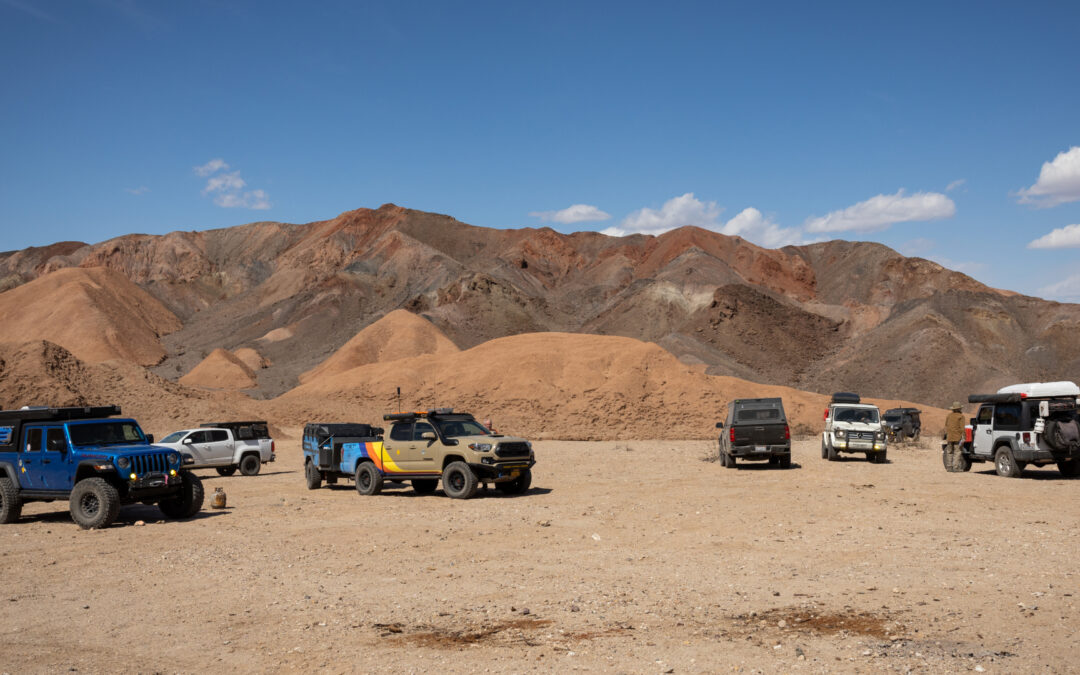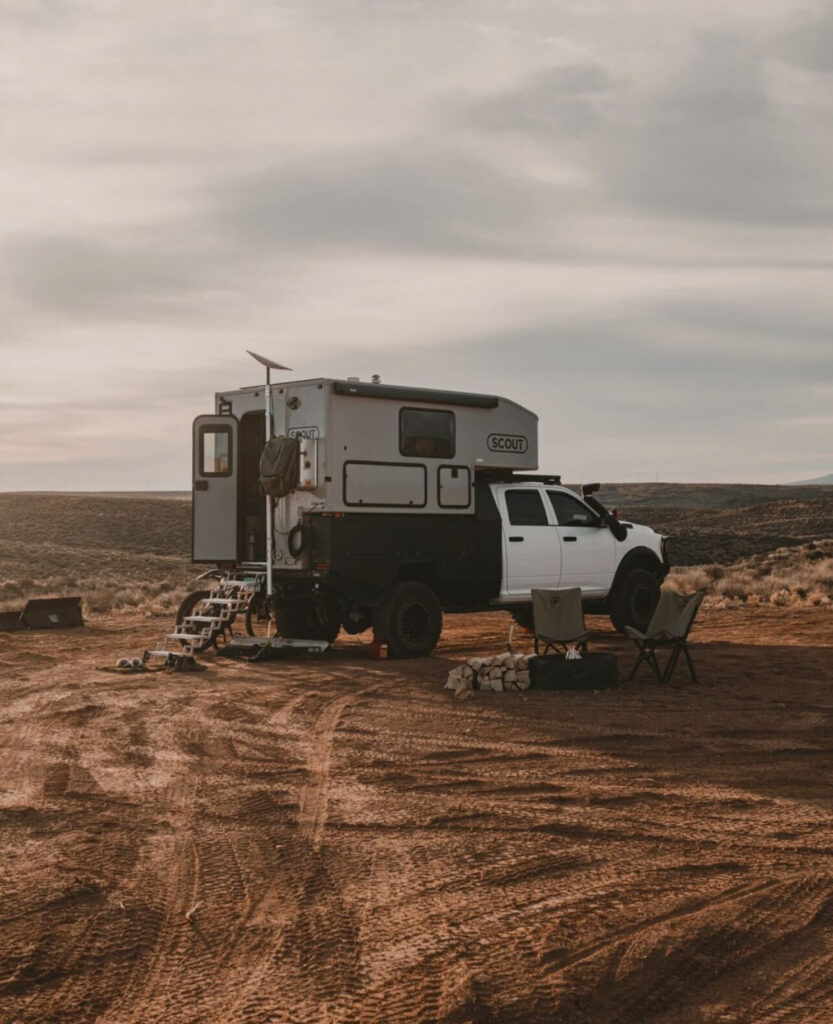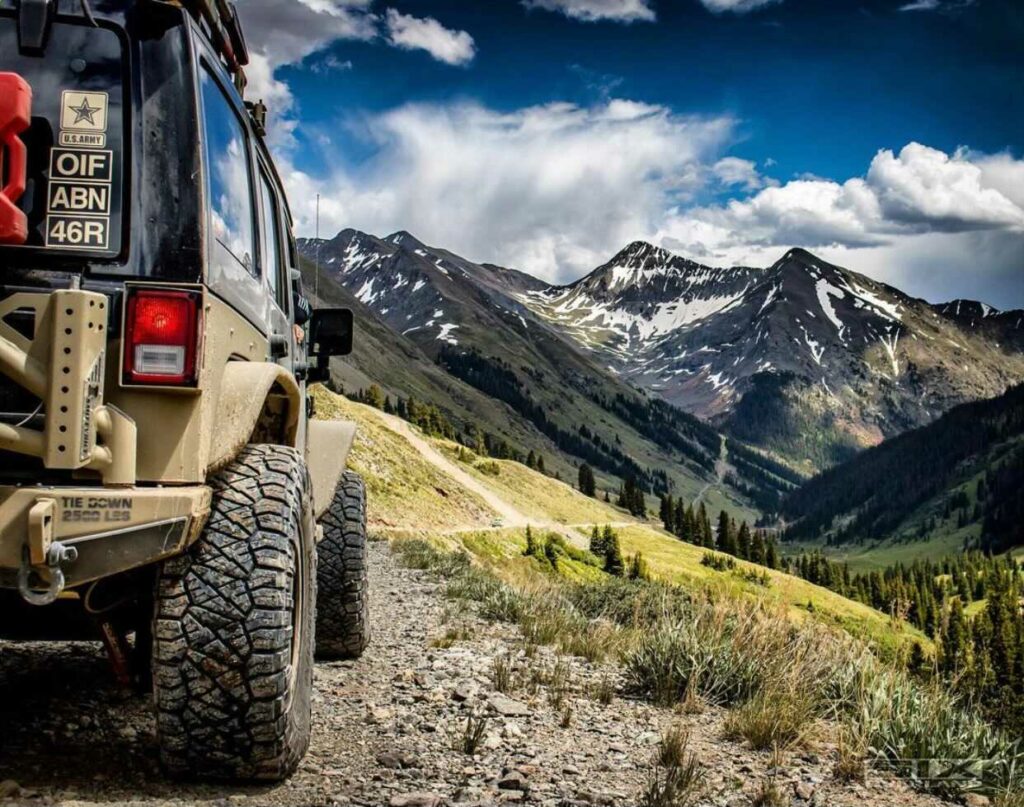Written by guest writer Jack Shaw
Cover photo by Mike Johnston
Overlanding off-road is an incredible way to travel for outdoors enthusiasts, letting you be one with nature and rely on yourself for survival. If your trip lasts days or weeks (or longer), you’ll need the right vehicle for practicality and comfort.
These excursions aim to get the most out of the journey, so how do you accomplish a fulfilling trip? It starts with the machine you pick. Here’s a guide on selecting what size overland vehicle is right for you.
Questions you should ask
Getting an overland vehicle is exciting, as it will unlock new outdoor adventures for you and your family. Before you decide, ask yourself these questions to narrow down what you want.
What will you use it for?
The first question you should ask yourself is what you’ll use it for. If your primary goal is overlanding, you need a vehicle with high ground clearance to avoid bottoming out. You never know when you’ll encounter rocks and challenging terrain in your path. Ground clearance should be at least 8 inches, with some vehicles exceeding 10 inches.
Driving your big rig is half the challenge with overlanding. You’ll also need the vehicle for camping if you plan to stay multiple days. Ensure the rig is large and comfortable enough to sleep in.
What terrain will you drive on?
Do you have a preferred terrain to drive on with your off-roader? The area you live in may influence what size overland vehicle you should select. A machine with high ground clearance is excellent for rocky terrain and muddy areas. You’ll want off-road rated tires and a high clearance in order to maintain traction.
Large and small vehicles work for overlanding, each bringing pros and cons. Large overland machines will likely have more powerful engines but are more challenging when navigating rough terrain. Conversely, smaller vehicles are typically more fuel efficient but will provide less comfortable rides.
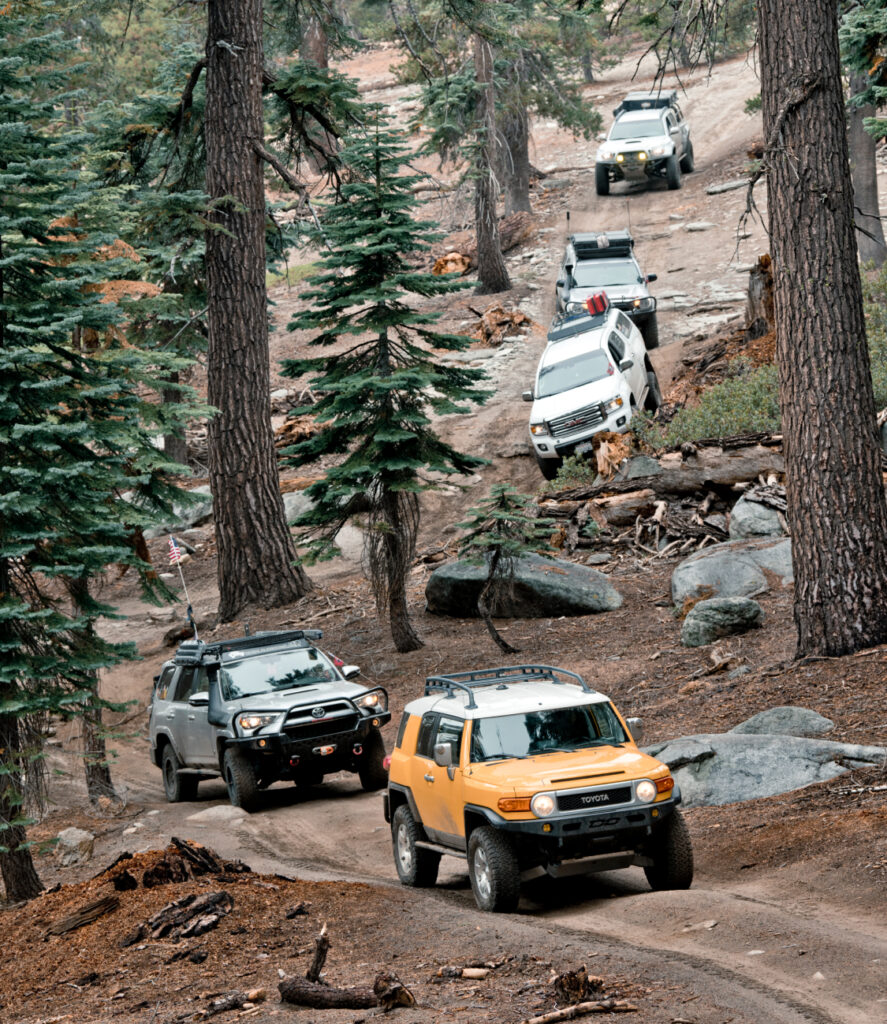
Photo by Barry J Holmes for Overland Bound
How many people do you travel with?
Next, consider how many people will accompany you when you’re overland-bound. Will a partner or a friend come along? What about your kids? Making your trip a family affair requires a larger vehicle with more seating.
Plus, there’s also cargo you need to fit in the back. The last thing you want is your kids feeling cramped against your cooking gear and tools. On the other hand, frequent solo trips may let you get a smaller vehicle and easily navigate the dunes and hills.
How long are your trips?
Overland trips can last days, weeks or even months and years, depending on your itinerary. The length of your excursion will affect your vehicle selection by influencing how much cargo you bring.
Overlanding for a few days will require some gear, food and tools. However, a week or more extended trip will start to increase your vehicle’s load. You may need additional refrigeration to store the food you’re bringing.
If you need a large vehicle, check the payload capacity to ensure it fits your needs. For example, a Toyota Tundra’s payload capacity is around 1,940 pounds, whereas the Ford F-350 Super Duty can hold 8,000 pounds.
What is your budget?
Considering price is essential due to how expensive cars are nowadays. Kelley Blue Book data show the average transaction price of a new vehicle was about $48,334 in July 2023 — down slightly from June.
The size of your vehicle correlates with how much the machine will cost. Big rigs will cost more because their engines are more powerful and require more resources. You can save a few dollars by choosing a smaller vehicle or considering alternatives. For example, renting is a solid option if you don’t go on overland trips often.
How big are overland vehicles?
Once you answer those questions, you’ll better understand your priorities when getting an overland vehicle. So, how do they correspond with size? Here are a few examples of overland vehicles and how big they typically are.
Vans
Vans have become more than just a vehicle for picking up the kids from soccer practice. Nowadays, auto manufacturers produce terrific vans for overlanding. For example, the Mercedes-Benz Sprinter has evolved to be a formidable vehicle.
The Sprinter provides a happy medium with off-roading capabilities and comfort. Its base model has a 144-inch wheelbase and a standard roof. However, you can upgrade to a 170-inch wheelbase with a higher roof. The vehicle is tough enough to last on gravel and dirt while keeping you comfortable on overland trips.
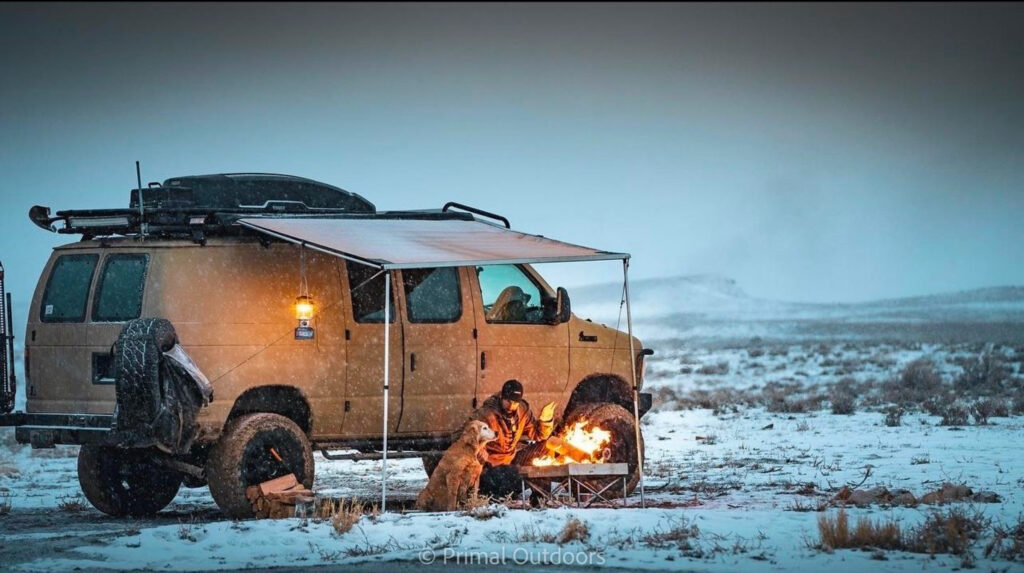
Photo by Jason Darrah @primal_outdoors and his well equipped and well traveled van. A highly recommended follow.
Trucks
There are a wide variety of options for overland trucks. Small trucks get the job done if it’s only you on the trip with your essentials. A few mid-size options on the market include the Ford Ranger, GMC Canyon, Chevy Colorado and the Toyota Tacoma. For example, the 2024 Ford Ranger XLT has a 128-inch wheelbase, a 211-inch length and a 74-inch height. Choosing an off-road package like the Tremor for Ford or the AT4X for the Canyon are ideal.
Are you looking for a middle ground? Full-size trucks are great if your overlanding requires more towing and payload capacity. Some trucks in this category include the Ford F-150, Toyota Tundra, Chevy Silverado and the Ram 1500. The Dodge Ram, for example, has a 144-inch wheelbase, a 233-inch length and a 78-inch height.
The heaviest end of the spectrum comes with heavy-duty trucks. These rugged machines bring maximum towing capacity for your boat, RV and other vehicles. The RAM HD, Ford Super Duty, Chevy Silverado HD and the GMC Sierra HD are some of the best options on the market. The GMC Sierra HD boasts a 172-inch wheelbase if you get the long bed, a 266-inch length and an 80-inch height.
And in a category all its own there’s the entire Jeep lineup. From two door Wranglers to full on Gladiator trucks, Jeeps are well known for their off-road durability.
This build by Kingston @roaminglost merges heavy duty truck with comfortable habitat. Photo @roaminglost.
Extreme Big Rigs
Who says you need a van, truck or SUV to go overlanding? Some companies go above and beyond and make extreme overland rigs. These machines make living in your overland vehicle more manageable.
One option you have on the market is the Mercedes Zetros. This recreational vehicle is terrific for overland trips because of its size, space and durability. The Zetros has a 4,800 mm wheelbase (189 in) and a weight ranging from 8.1 to 11.5 tons. Inside the vehicle, there’s enough room for a living room, kitchen and other amenities.
Do you have any plans for your lottery winnings? You’ll need to hit the jackpot to afford Unicat’s million-dollar Terracross model. This gigantic machine looks like the manufacturer created an RV based on military vehicles. The vehicle has a full kitchen, a bathroom and 532 horsepower under the hood. If you spare no expense, this vehicle is for you.
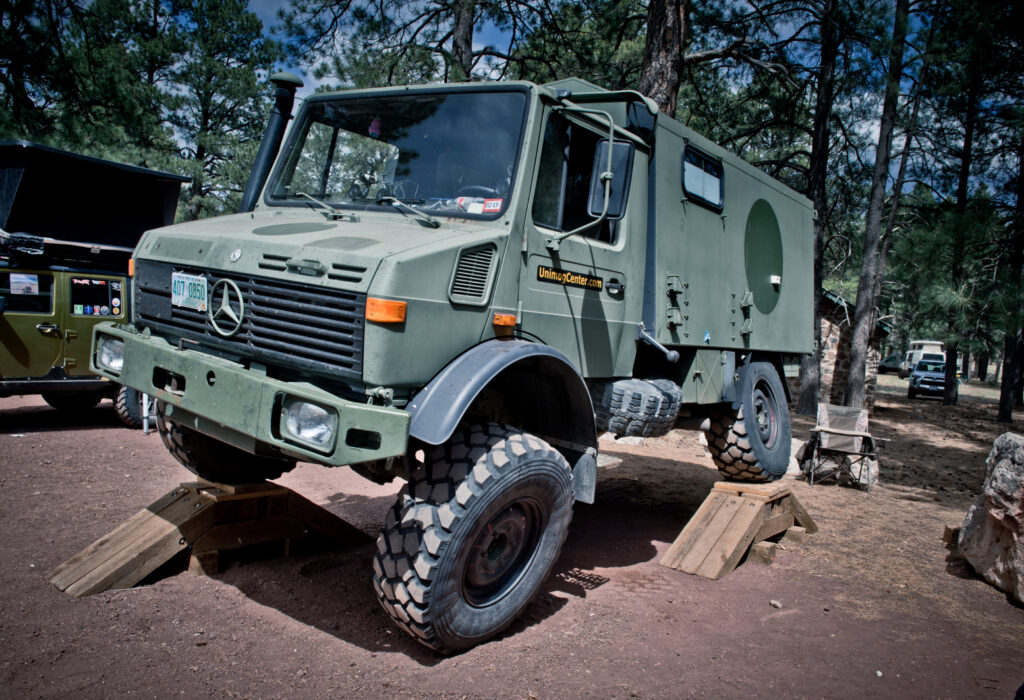 When your overland vehicle is a military machine. The unimog is a great platform to build an overland habitat on.
When your overland vehicle is a military machine. The unimog is a great platform to build an overland habitat on.
Photo by Barry J Holmes for Overland Bound.
Picking the Proper Overland Vehicle for You
Overlanding the right way starts with selecting a suitable vehicle. There are numerous options on the market, so choose your big rig carefully. When browsing, ask yourself the five questions in this article and make the best choice for your needs.
Author Bio
Jack Shaw is a seasoned automotive writer with over six years of experience. As the senior writer for Modded, he combines his passion for cars, trucks, and offroading with his expertise to deliver engaging content that resonates with automotive enthusiasts worldwide.

